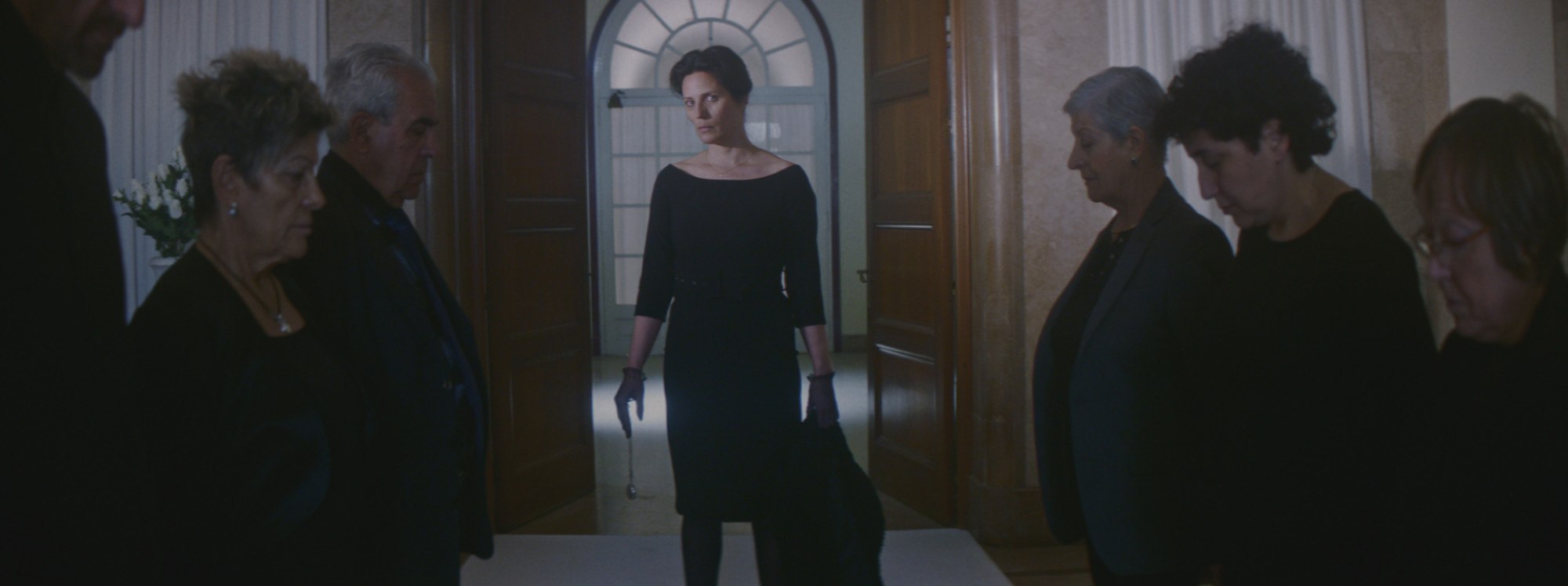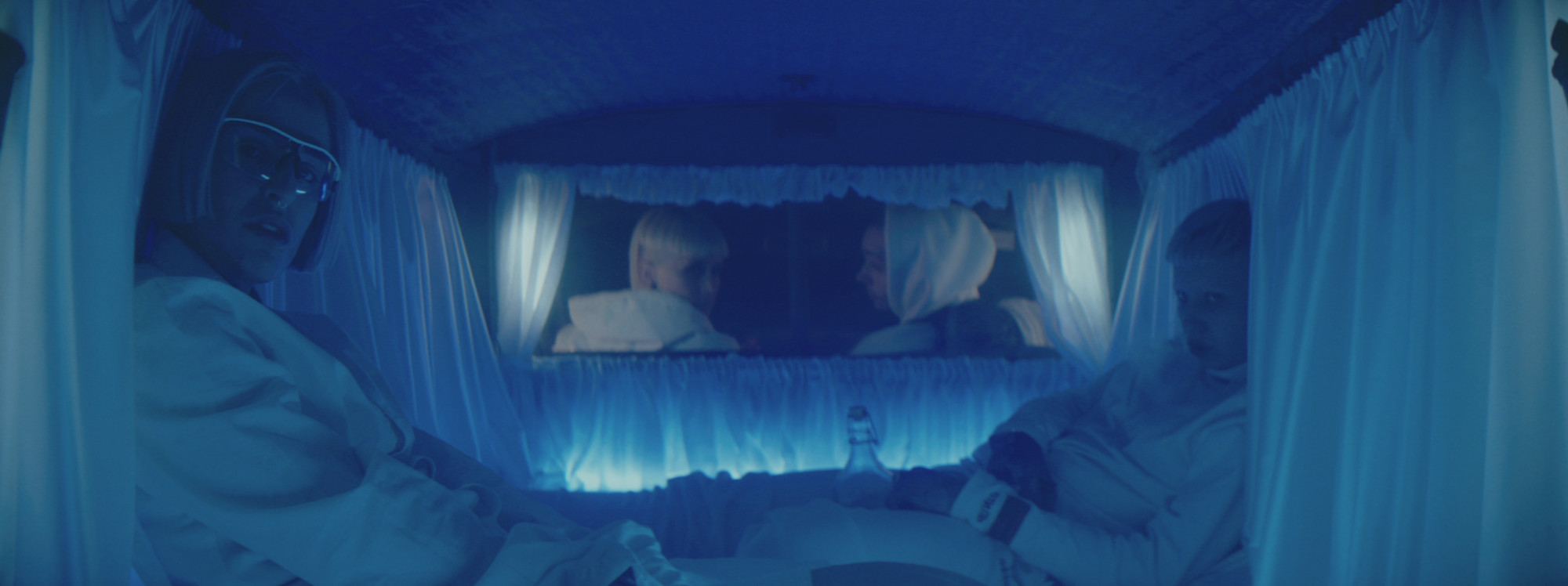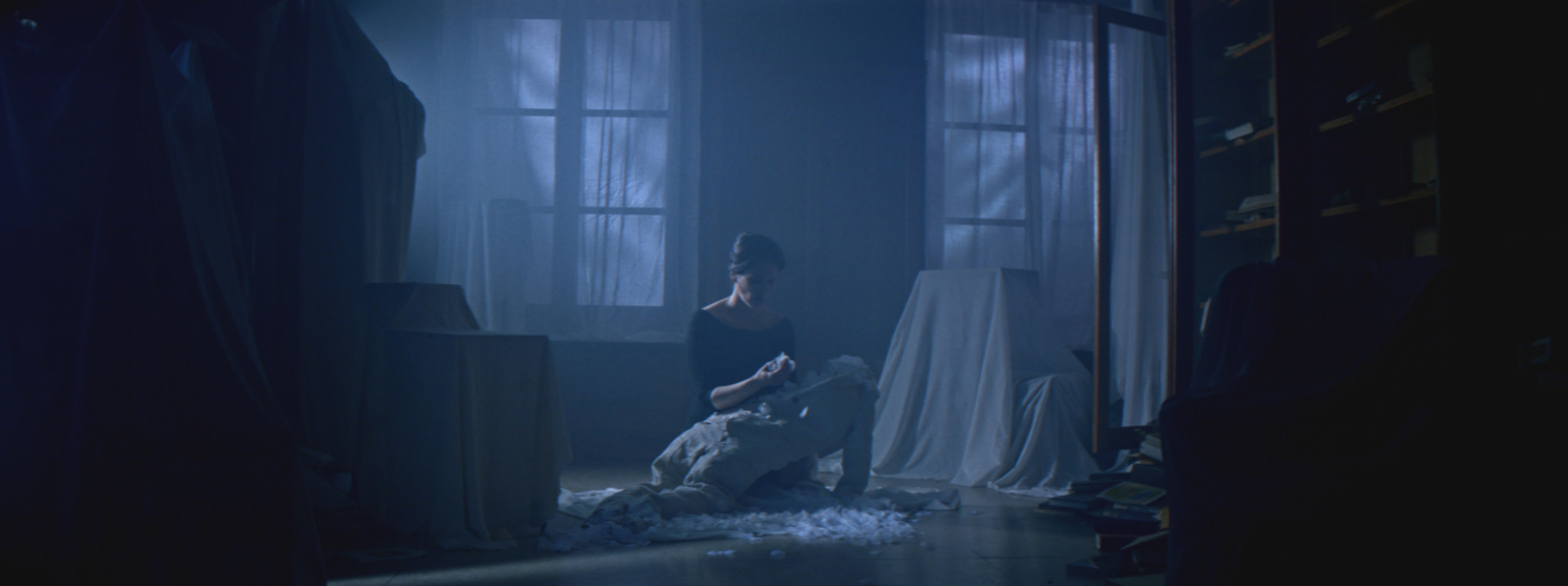
Set to the techno beats of Cora Novoa’s reflections on loss in haunting track State of Mind, Barcelona-based filmmaker Alex Gargot weaves an unnerving story of a grief stricken mother who battles with overwhelming sadness as she considers the possibility of life after death on her son’s funeral day. DN invited Alex to share how the mental image of a perverted modern twist on ancestral rituals inspired this macabre story.
Cora and I met to talk about the concept of the song: the loss. She gave me absolute freedom to interpret it as I liked, because everything can be lost – a valuable object, a relationship or even a life. It was great because she gave me a lot of material that she herself had used as a source of inspiration to compose the track; such as mood boards and even a poem by Elizabeth Bishop entitled as the second act of her album Mental Diary to which the song belongs. After multiple listens with closed eyes I came up with imagery as dark as its atmospheres, it was those disturbing drones that grow progressively below the persistent beat that were guiding me along the process of imagining the story of the loss of a son. I even asked Cora for the drone tracks separately for the opening credits.
The first scene that came to my mind was a skinny young man, dressed in a tracksuit and dancing like a stubborn crackhead on the child’s grave, while the rest of his mysterious crew are waiting for him leaning on the car as its lights shine alternately. I imagined it as a revision of an ancestral ritual to communicate with the dead but totally perverted by modernity. That image was the core around which to sculpt the rest of the story of a mother pushed to say goodbye to her son.

The first scene that came to my mind was a skinny young man, dressed in a tracksuit and dancing like a stubborn crackhead on the child’s grave.
Soon certain elements were erected as symbols that helped me build the whole imagery. For example, the white of the tracksuits of this mysterious glum angels clan would be associated with the non-mortal, so that all the living characters would dress in black while the dead would wear spotless white. Light would be a symbol of life after death and always linked to the child. This is how I decided that the way to present the child in the first flashback would be playing with the light, thus establishing the link from the beginning. And the white rose would be associated with the expiration of life, losing petals throughout the footage until running out of them.
My goal was to show such a dramatic event as the death of a son and the fear of saying goodbye to him from an ambiguous and open perspective, always placing beauty over drama.

I met Thais Català (Cinematographer), Chary Romero (Art Director) and Álvaro Priante (Producer) to read the script and consider the viability of the project. We realized that we had to extend the shoot from one to two days and that we would have to get more budget to fulfil our expectations, which we managed to achieve.
The shooting style was something that came with the story, the sobriety of the static shots and the linear travellings in and out with symmetrical compositions are the main resources that I used to shape it. Working with Cora gave me a lot of freedom and therefore I consider that I’ve been able to tell the story in my own words. When I first conceived the idea I was even considering the option of going for black and white, a resource that I left aside as the story took shape.
Our choice of equipment was a result of discussions with Thais, the only thing that was clear to me from the beginning was that I wanted to work with anamorphic lenses to get a very cinematic look and, despite the extra financial effort that it meant, we stood firm in that purpose.







One of the best decisions was to shoot everything in the same location, a completely empty old tuberculosis sanatorium that Álvaro spotted. There we could recreate the different spaces and even recycled a room by playing with the perspective and dressing it up so that it looked like two different spaces. That way we would not waste time moving and could overlap the prelighting processes of consecutive scenes. In fact, this location offered us some spaces that were not contemplated in the first script, but when we visited it we did not hesitate to incorporate them, such as the chapel where we placed the angels to worship the child just before the climax. It even had some large exteriors in which to shoot the car scenes without having to move.
Everything can be lost – a valuable object, a relationship or even a life.
There were a couple of scenes that we had to discard. No doubt we were very ambitious with the number of shots per day, but we didn’t discard any of the essential shots to tell the story as it should be told. Personally, I would have liked to take more advantage of the car by adding some exterior shots but we had to prioritize.

The news of the official selection at the Berlin Music Video Awards in the middle of post production meant a boost of motivation when making the VFX. Eighty4 did an excellent job with the effects, we were able to fine-tune the detail until reaching the level of realism and subtlety that we were looking for because, despite the inherent surrealism of the scenes, the goal was to contain the effects in something sober and elegant.
I am currently working on the script for a short film that I hope to be shooting soon. It is a story inspired by how I imagine the old age of someone of my generation, from a very nostalgic look and framed in a future that borders on science fiction. In fact, I still do not have a production company for this project, so I’ll take advantage of this opportunity to appeal to interested fiction producers. I have also some ideas I’m writing that might end up as music videos or fashion films, depending on the opportunities that arise in the next few months.


